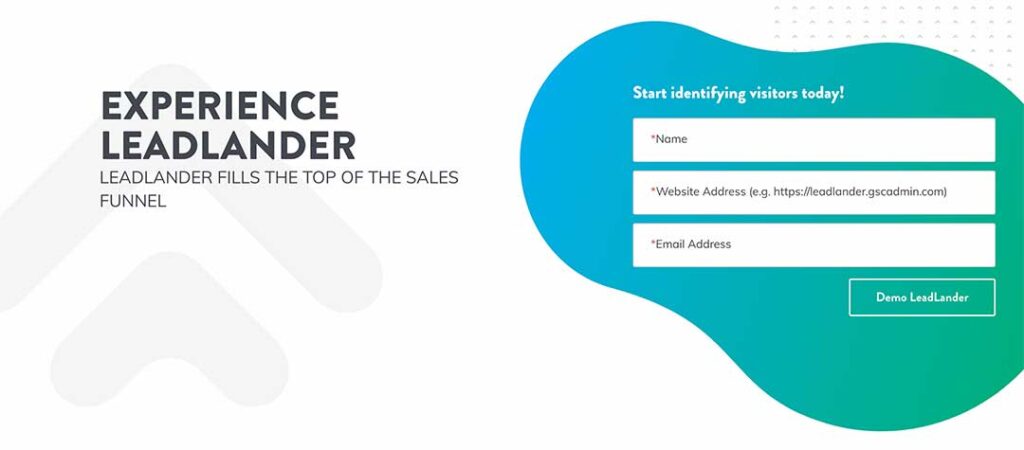Updated May 17, 2022
Maximizing your company’s sales efforts is about more than just getting as many leads into your funnel as possible. In our original article, we talked about how to qualify a lead and why it’s important to have a great lead qualification process to ensure you’re spending your resources optimally.
But the best companies never stop innovating their lead qualification strategy, which is why we’re back with another update to this piece. Keep reading to discover more tips and tricks that will help you qualify your leads more effectively.
Leads are the lifeblood of your business. They create new sales sources for your company to take advantage of and are the only way to consistently achieve revenue growth. But 61% of B2B marketers say that finding high-quality leads is one of their biggest challenges.
Tracking down new prospects presents its own difficulties. But it’s often more of a struggle to differentiate the good leads from the bad ones. Doing so is essential, as it will tell your business where its limited marketing and sales resources will be best spent.
That begs the following questions: Where do you begin when learning how to qualify a lead? What factors should your company consider when it attempts to separate the most promising leads from the rest? We’ll answer in the sections below. Keep reading to learn more.
What Is Lead Qualification?
Lead qualification is exactly how it sounds: It’s the process of determining how valuable a lead is. Marketing and sales teams qualify leads to try and figure out how likely a prospect is to buy something from their company. This tends to be a multi-stage process.
The very best sales teams are continually qualifying their leads to ensure that they’re spending their time in the best manner possible. For example, the initial qualification process often begins during the inbound marketing phase.
In this phase of the sales cycle, companies use marketing data gathered from their website, social media profiles, and email campaigns to see how closely a new prospect matches their ideal customer profile.
If the prospect passes this step, then they’re identified as potentially being a new sales source. The company’s sales team will typically reach out to them over the phone or via email to better identify their needs.
This follow-up conversation is often used as a secondary lead qualification phase. The sales rep will gather information and use it to determine whether the prospect is worth investing more time in. This kind of re-qualification recurs constantly as the company is moved down the sales funnel.
Ask Your Leads These Questions to Qualify Them More Efficiently
What’s your biggest priority right now?
This question is a great way to get a sense of how serious the lead is about buying from you. If their answer involves something that’s totally unrelated to your product or service, you may still be able to win your business. But the sales process that it’s going to take to do so may go on for longer.
Ideally, you want to hear that the lead’s top priority is something your product or service can help them solve. If you get that response, then you’ve instantly qualified the lead as a high-value target for your company.
What’s your timeline for achieving your goals?
This question is another must-ask when you’re qualifying a lead during an initial phone call. Its purpose is to let you know how quickly the lead plans on buying a product or service like yours.
If a lead tells you that they would like to achieve the goals that relate to your company as soon as possible, that’s a great sign. It means they’ll want to make a purchase quickly in order to get the ball rolling as soon as possible.
Conversely, if the lead tells you that their timeline is months or even years in the future, they’re likely not as high-value. This doesn’t mean you should cease pursuing them altogether, though. Attempt to stay in touch with the lead and keep them in your sales pipeline. You can even make a note of their timeline in your customer profile so you know exactly when to check back in.
What are your company’s greatest strengths and weaknesses?
Asking your leads this question will give you additional insight into which of your company’s products or services that lead is likeliest to buy. This information can often play a big role in determining the value of a lead.
For example, your company may offer several different services, each with a different price. If a lead tells you that one of their company’s weaknesses is something that your highest-priced product addresses, that can be a strong sign they turn into a high-value customer.
You may also want to ask the lead what their budget is for the problem they’re addressing. This can solidify your understanding of the type of return you’ll be able to get for the time you invest in pursuing that lead.
Track where your leads are coming from
Referral Source is a metric that often gets lost in the lead qualification process. However, it can be helpful to track where your leads are coming from and use that information as part of your scoring process.
This can sometimes reveal insightful information about who’s most likely to purchase your products. For example, you might discover that leads coming from social media are much more likely to become paying customers than those that come from emails.
With this information, you might begin ranking social media leads higher than those from email.

Keep your company’s lines of communication open
Lead scoring is a process that matters deeply to both sales and marketing. However, many companies work in silos. They don’t freely pass information back and forth to one another as a matter of routine.
This can create situations where different segments of a company use different lead qualification strategies. And when that happens, you increase inconsistency and diminish the level of confidence you have in the results from qualifying leads.
To ensure this doesn’t happen to you, check that your marketing and sales teams communicate with one another about lead qualification as a matter of routine. You may also want them to use a shared software tool to make staying in touch easier.
Speed is your friend
It’s important to ensure that you have the right lead qualification strategy for your unique company in place. But don’t let the pursuit of perfection slow you down too much.
It’s also important for your sales and marketing teams to efficiently work through the lead qualification process.
First, it’ll be important for your employees to prepare diligently before speaking with a lead. They should have all their questions ready and know exactly what they’re looking for before the conversation takes place.
Similarly, your employees will need to know when to give up and when a lead is worth pursuing. So try to put some guidelines in place to make that easier on your team.
Ultimately, these types of guidelines will help your employees score their leads more efficiently. That way, they can interact with as many prospects as possible so that they’re unearthing the most promising ones at a faster rate, which could do wonders for your company’s bottom line.
Why Should We Qualify Our Leads?
Unless your company has unlimited resources at its disposal, it should be qualifying its leads before acting upon them. Doing so is important for a few key reasons. When you qualify a lead, you learn:
- Whether a prospect is in the correct industry
- Whether they might have a need your product can solve
- If you’ll be able to provide more value than they’re getting from their current provider
- If the prospect has the authority to make purchasing decisions on their own
In an ideal world, you’d have access to all of this information before you reach out to the prospect directly. You may be able to gather the data you need by embracing website analytics. But if you aren’t able to find the information upfront, don’t sweat it. Reach out to the prospect directly and ask them about what you need to know directly.

Qualify Leads With Lead Scoring
One of the most commonly used methods for lead qualification is called lead scoring. Lead scoring quantifies the qualification process by assigning a point value to each prospect. This tends to occur early in the sales pipeline before too much time’s been invested in the prospect.
The theory behind lead scoring is straightforward. If all new prospects are assigned an objective point value, it becomes very easy for a salesperson to determine where their time will be best spent. Lead scoring supports revenue growth in this way.
Your company can create its own lead scoring system to match its unique needs. But no matter what you want your system to look like, you’ll need to gather data before you can qualify leads with it. Here are some of the things that you should be looking for.
Buyer Profile
A buyer profile describes the type of person that you’d like to do business with. It might include demographic details, behavioral traits, goals, and pain points, among other factors. Once your company understands what its ideal customer looks like, you can begin scoring your leads against that profile.
For example, you might give a prospect a point for every part of your buyer profile that they match. If they’re the right age, they get a point, if they have the right pain points, another point, and so on.
Company Info
It’s also important to spend some time assessing the companies that have moved towards your sales funnel. Some factors you’ll want to consider are how large the company is, the industry it operates in, and the budget it has for products or services like yours. Once again, you can add or subtract points based on how closely the company’s traits align with your ideal company.
Online Behavior – email and social media engagement
Tracking a prospect’s online behavior can generate powerful insights into how likely they are to purchase your product. Among other behaviors, you’ll want to look at things like:
- How often they visit your website
- What pages they visit
- How long they stay on those pages
Similarly, you’ll want to perform further research into the prospects that receive your emails. Are they opening the emails you send? What do their click-through rates look like? These are much more reliable indicators of interest than simply being signed up for your email list.
Finally, you can also track how prospects are engaging with your social media posts. If they’re liking and sharing them often, then that should add points to their overall lead score.
Try BANT To Boost Revenue Growth
If you’re looking for a simple way to get started with lead qualification, then the BANT strategy can be a good option. It’s an acronym that stands for Budget, Authority, Need, and Timeframe. These are four of the most important pieces of information that you need to qualify a lead.
For example, you need to know if a new prospect has the budget they need to purchase your product. If they don’t, you’d only be wasting your time in pursuing them heavily. Similarly, you need to know if the prospect has the authority to buy your product. If they don’t, then you might be better off focusing your sales efforts on a decision-maker within their organization.
Need and timeframe are two more significant factors in assessing the quality of new sales sources. You should attempt to verify that a prospect both needs your product and would purchase it within an acceptable timeframe before spending too much time or energy on trying to convert them.
SPIN Can Help You Find New Sales Sources
SPIN is another nifty acronym that can help you qualify leads. It stands for Situation, Problem, Implication, and Need-Payoff. When using this process, you start by trying to understand the prospect’s situation. In other words, you ask questions that help you understand whether their current goals and capabilities align with your offerings.
Next, you ask problem questions. These are meant to illustrate the types of problems that your product can solve for the prospect. You hone in on these problems in the Implication stage, during which you’ll determine how your products will solve the prospect’s problems.
Finally, the SPIN process ends with Need-Payoff questions. These bring it all together. They show the prospect exactly what you can do for them by quantifying the benefits you’ll provide their company.
If you have trouble with completing some of these phases of the qualification process, then it’s likely that the prospect isn’t a good fit for your company. In this case, your time might be better spent focusing on different sales sources you’re researching.

Data, Data, And Data Again
It’s worth emphasizing how important data is to the entire lead qualification process. The better your data, the more accurate your lead scores will be. And so improving the data that you collect on prospects can lead to revenue growth in a very direct way. So make sure that your company is doing all that it can to collect rich and accurate data on the prospects that it interacts with.
How To Improve Your Inbound Lead Qualification
The techniques and processes for qualifying leads are constantly evolving. Read on to learn how to qualify a lead and how to take your lead qualification game to the next level:
- Designate a qualification expert. The lead qualification process is both critical and complex. In 2021, business owners are investing in a designated software as well as a designated team member to gatekeep new inbound sales leads. This individual can take over every aspect of the qualification process and ensure consistent, high-quality leads.
- Don’t overlook email. While the sales world is trending toward social media, platforms like Facebook and Instagram are making it harder for businesses to reach their prospects without paying for ads. Your email list is more valuable than ever, because, in 2021, individuals are less likely to provide their personal information than they were 5 years ago. When someone provides their email, they are probably genuinely interested in what you have to offer, and might just be a qualified lead.
- Persistence is still key. The name of the lead prospecting game is still persistence. The best way to find out if your lead is qualified is by having a real conversation with them about their needs. It doesn’t matter if it’s over email, on a phone call, or via Zoom, and it doesn’t matter whether you ask for a sale immediately. Try to schedule a sales meeting, or simply build the relationship – contact your leads immediately to find out if they are truly interested. A “no” is just fine because you’ll know the lead is not qualified and you can invest your time elsewhere. Your goal is to eliminate the “maybes,” and you should contact your potential lead within 24 hours and continue to follow up regularly until you get clarity.
A Simple Lead Qualification Checklist
There are a ton of different ways to qualify a lead. But if you’re just looking for a straightforward, to-the-point method, try asking yourself the following four questions about a prospect.
1. Are they interested in your product?
This is the first test. If someone doesn’t have any interest in your product, that doesn’t mean they won’t eventually. But it does mean they will have to go through a lengthy research process before they are likely ready to speak with you.
If the answer to this question is no, focus on targeting the lead with content that introduces them to the value of your product.
2. Do they have the money to buy it?
If a lead can’t afford your product, it’s time to put them on the backburner. If that changes one day, you’ll still want to keep them in your sales funnel, but you’ll get more out of your time if you spend it elsewhere.
3. Is now the right time for them to make a purchase?
We noted the importance of timing to qualify your leads. The bottom line is that someone can be interested in your product and have the money to buy it, but it still might not be worth pursuing heavily if the timing is off.
4. Can the person I’m speaking with make a buying decision?
This step will only apply to B2B deals, in which the lead you’re targeting may or may not have the final say over the company’s purchasing decisions for their department.
If the lead isn’t a decision-maker, you’ll still want to focus on their company. You may just need to figure out who you have to convince within the business to make the sale.
There are a few ways you can do that. One option is to use social platforms like LinkedIn to look up the people who hold key job titles, like “director of sales” or “head of IT.”
You can also just ask the lead you’ve targeted. If they’re showing a strong interest in your company and your products, they’ll likely be more than happy to point you in the right direction for closing the deal.
Using the Checklist
If you’ve gone through this checklist with a lead, you have all the information to score them accurately. The way you do that will depend on the answers that the person provides.
For example, If the answer to each question is yes, the person should be at the top of whatever lead scoring system you use.
If all of the answers are a no, your time is better spent elsewhere.
Or, if some answers are a no and others are a yes, then the lead can land somewhere in the middle on your ranking system.
This isn’t a perfect science, but it’s an excellent way to get an upfront feel of how promising different leads in your funnel are.
LeadLander Can Help
If your company isn’t currently collecting the data that it needs to qualify leads, consider using LeadLander to resolve the issue.
Our platform enhances both your inbound and outbound sales and marketing efforts. It does so by providing specific details about your anonymous web visitors and real-time alerts for new and returning prospects. It could be just what you need to track down qualify new sales sources and boost your revenue.
Getting started with LeadLander has also never been easier. We’re offering a free 14-day trial that you can sign up for without having to give us your credit card. And you can cancel it whenever you want.

If you’d like to give LeadLander a shot, then you can sign up for our free trial here.
